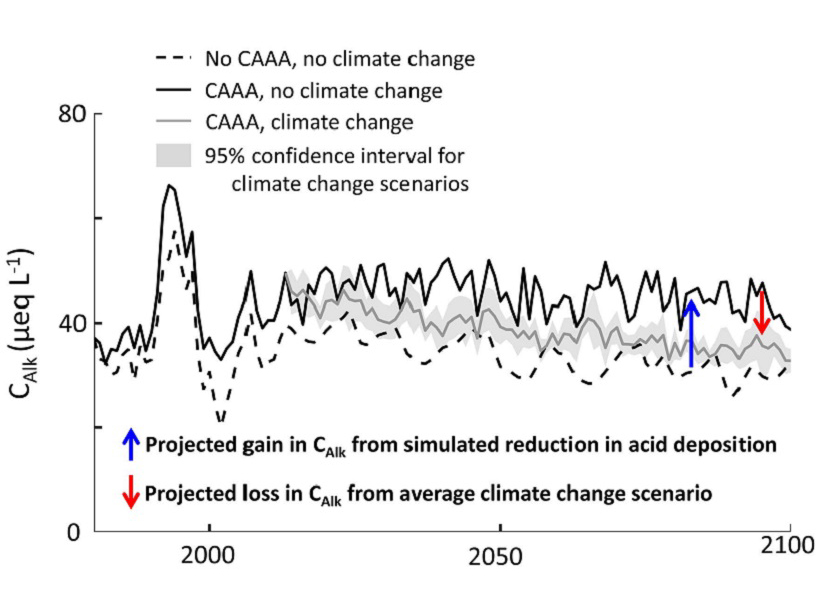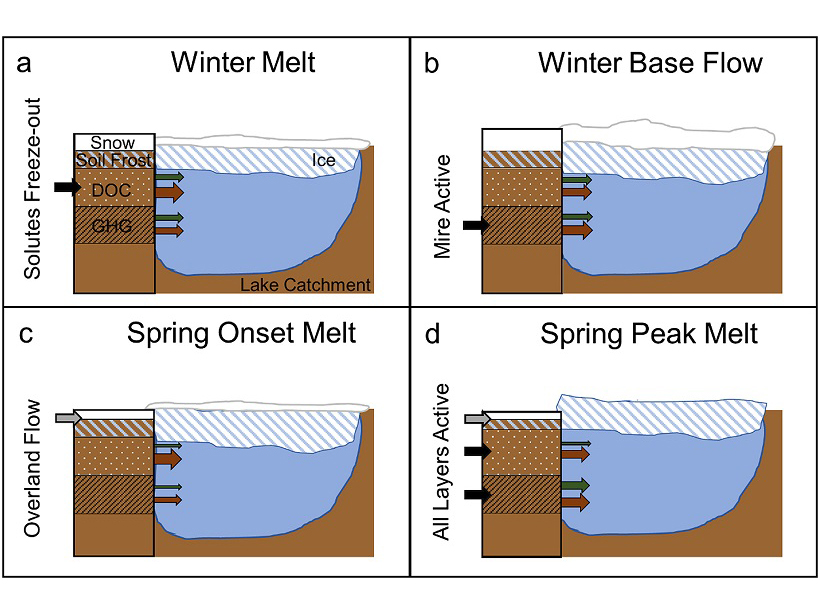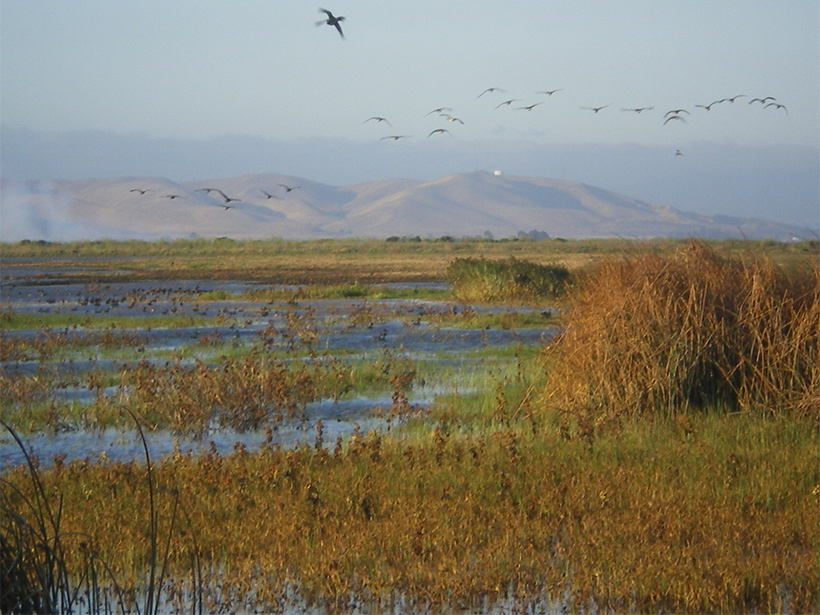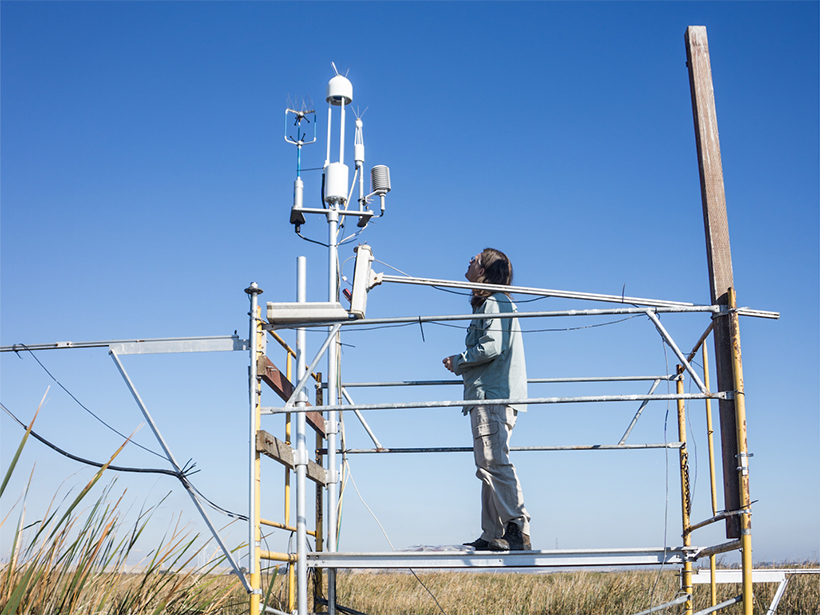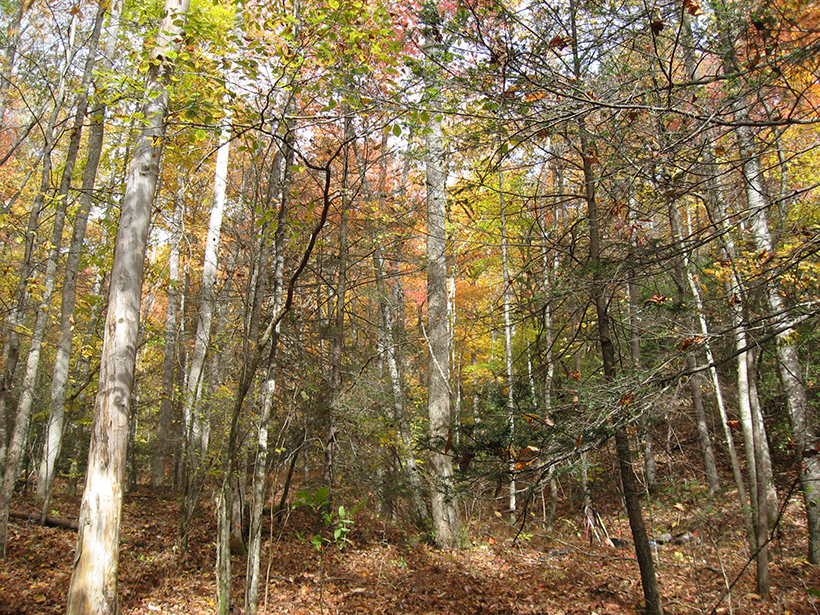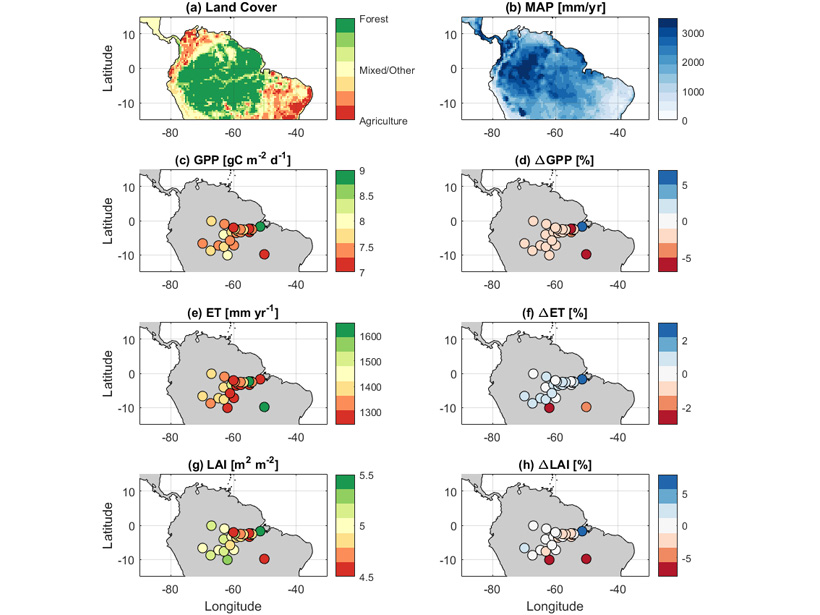Clear air policies have led to dramatic reductions in acid rain and improved ecosystem health, but it now appears that climate change could counteract those gains.
Journal of Geophysical Research: Biogeosciences
What Lies and Waits Beneath Lake Ice?
Rarely made detailed measurements of carbon dioxide and methane under lake ice reveal a story more complex than simple models of gas buildup, with surprising findings for climate change impacts.
Budgeting Ozone-Depleting Emissions from Coastal Tidal Marshes
Brackish wetlands and their salt-tolerant vegetation are significant methyl halide emitters. The natural emissions add chlorine and bromine to the stratosphere, which break down ozone.
Restored Wetlands Could Lower Local Surface Temperatures
A 3-year study of wetlands and cropland in a major California delta highlights the need to consider the physical effects of vegetation when planning land use changes.
Rising Seas Increase Methane Emissions from the Mouths of Rivers
Drowned river deltas exhale large quantities of greenhouse gas, new study finds.
Insect Infestations Alter Forest Carbon Cycle
A hemlock woolly adelgid outbreak in southern Appalachia prompted a transformation in where the forest stores carbon.
Invasive Freshwater Mussels Drive Changes in Estuary Sediments
The golden mussel has spread quickly in the 30 years since its arrival in South America and is transforming aquatic ecosystems in waterways across the continent.
Glacial Meltwater Plumes Support Greenland Phytoplankton Blooms
Field measurements from the Bowdoin Glacier show that entrainment of deep water into upwelling glacial discharge delivers crucial nutrients to the surface of the surrounding fjord.
Seasonal Leaf Production Is Key Control on Amazon Carbon Balance
Characterizing leaf phenology in process-based models reconciles both “dry season green-up” and drought controls on Amazonian carbon balance.
Dark and Stormy: How More Rainfall Leads to Warm and Murky Lakes
Reduced clarity in two northeastern Pennsylvania lakes has resulted in warmer surface water and cooler bottom water despite stable regional air temperatures during the past 3 decades.

